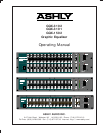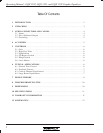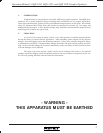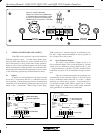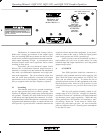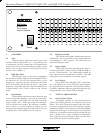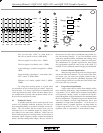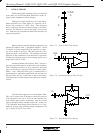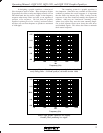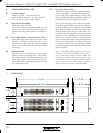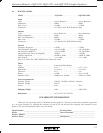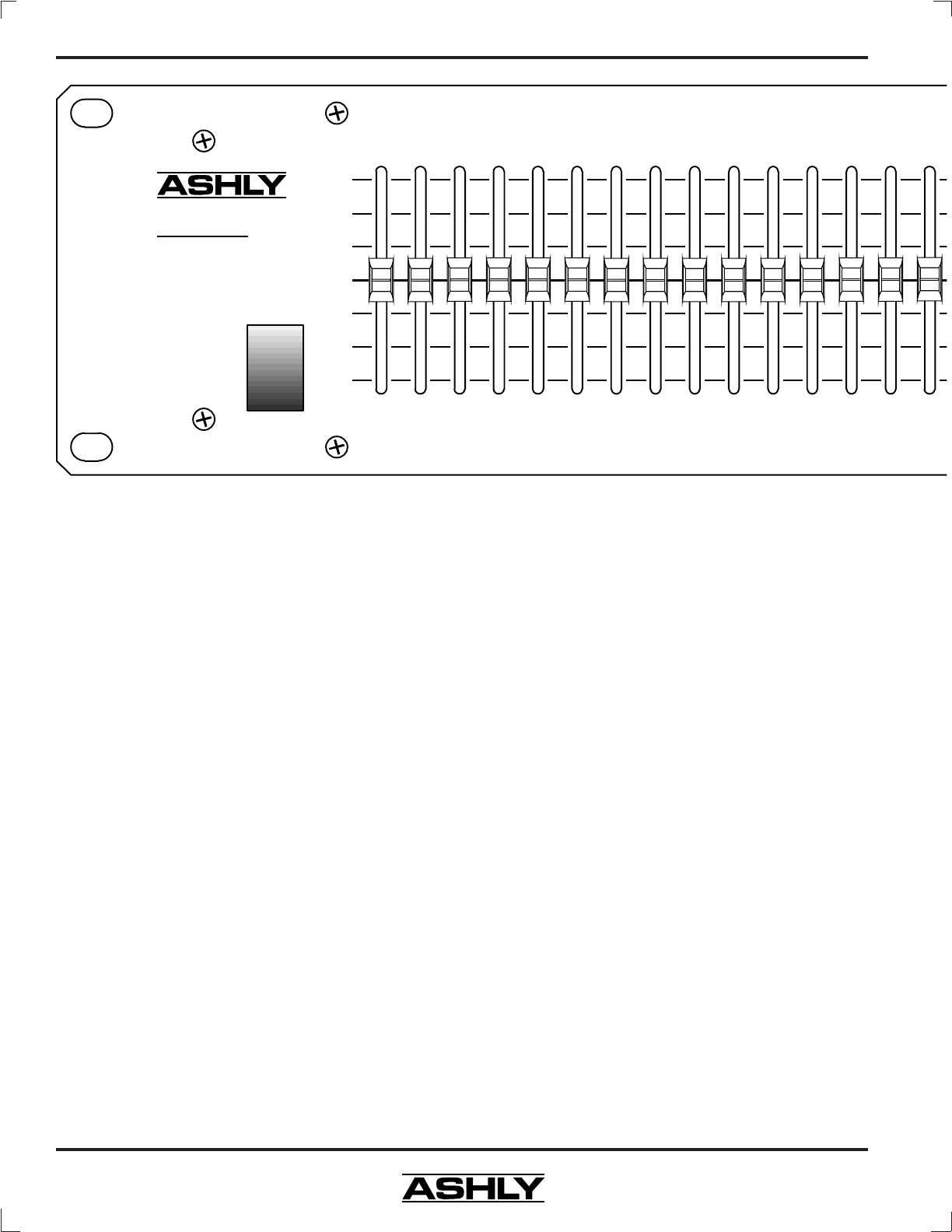
6
Operating Manual - GQX 3102, GQX 3101, and GQX 1502 Graphic Equalizer
20 25 31.5 40 50 63 80 100 125 160 200 250 315 400 500
GQX Series
Model 3101
Third Octave
Graphic Equalizer
Power
5. CONTROLS
5.1 Gain
The gain control adjusts the overall gain of the
equalizer when the EQ switch is “in”. It is generally used
to compensate for level changes due to the equalization
process, but can also allow the equalizer to adjust overall
system level and gain structure. Overall gain with this
control is from +6dB to -∞.
5.2 High-Pass Filter
The high-pass filter can be used to supplement
the frequency response achieved by the bandpass filters.
It’s function is to “roll off” the response below a given
frequency to eliminate subsonic interference like wind
noise, floor rumble, and microphone “pops”. The rolloff
frequency is adjustable between 14Hz and 280Hz on the
31-band models, and is fixed at 40Hz on the 15-band
model.
5.3 Equalization
The individual equalization faders adjust the gain
or loss at each filter frequency. There are 31 of these fad-
ers per channel on the GQX-3101 and GQX-3102 third
octave models, and 15 faders per channel on the GQX-
1502 two-thirds octave model. By adjusting a combina-
tion of faders, an overall frequency response can be
developed and the physical position of the faders will give
an approximate visual indication of this response.
5.4 EQ Bypass Switch
This switches the Graphic Equalization and gain
adjustments. This way, the effect of any equalization can
be compared to a “flat” response. This switch does not
defeat the High-pass filter.
5.5 Range Switch
This switch selects the operating range of the in-
dividual equalization faders between 15dB and 6dB on
the two 31 band models. The 15dB settings should be
used when this much equalization is needed. The 6dB
setting allows finer resolution on the fader settings.
5.6 Level Meters
On the GQX-3101 and GQX-3102 31 band mod-
els, a 10-segment, two color LED level meter indicates
the output level of the equalizer. A Clip indicator LED on
all models illuminates when any point in the equalizer sig-
nal path reaches a level within 3dB of clipping.
6. TYPICAL APPLICATIONS
6.1 General Tone Control
The graphic equalizer is a very useful device for
general tone shaping because it is intuitive and easy to
adjust. The visual reference provided by the slider posi-
tion gives an approximate idea of the frequency response
generated, with the lower frequencies on the left and higher
frequencies on the right. To use the power of an equalizer
effectively, you need to translate your idea of the tone you
want to produce into a range of numerical frequencies.
This is simple after a little practise. Here are a few refer-
ences which are useful for starting points:



